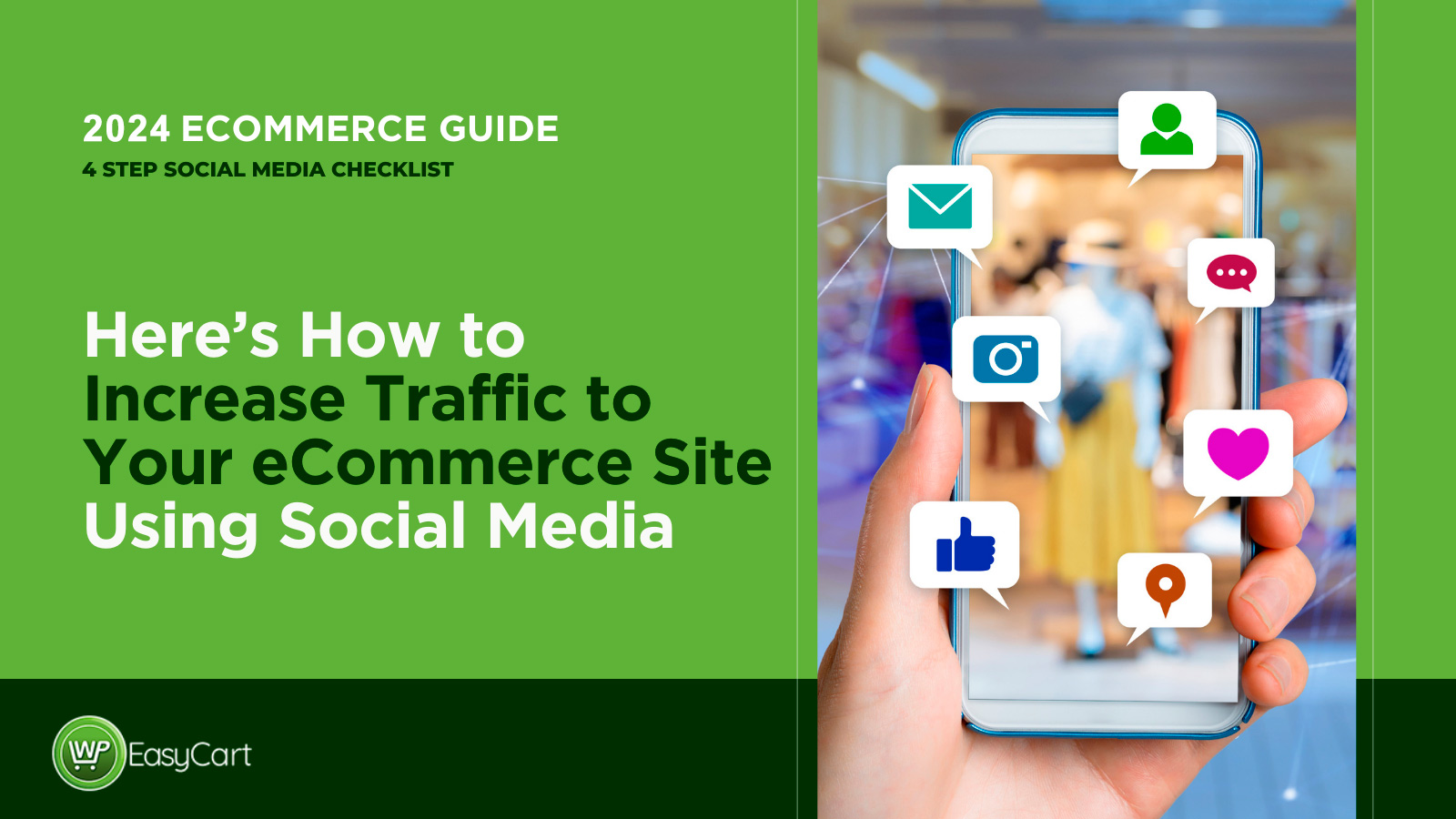Here’s How to Increase Traffic to Your eCommerce Site Using Social Media
From concept to creation, establishing an online store is exciting and exhausting even without creating new social media posts! Most businesses know social media is a powerful tool for getting their products in front of potential buyers, but they do not have a solid strategy or marketing plan. We have laid out three proven steps to increase the traffic and conversions on your eCommerce store through social media!
Set Sales and Traffic Goals from Social Media Posts
First, start by establishing what a positive outcome would look like. Many do this by establishing key performance indicators (KPIs) when looking to increase traffic to their eCommerce site. It is a good idea to narrow in on top indicators of success so that both you and your team can make all decisions based upon this KPI. You will want the goals you set to be measurable, relevant, and achievable. So, while you might like a million visitors on your website monthly, that might not be an achievable goal for a small startup.
Common KPIs used in social media by eCommerce brands include website visitors, conversions, page views and offers redeemed. Sit down with your team and establish what your short-term goals are for the coming month as well as where you’d like to be quarterly. Each month, review what worked best and implement those actions into your next month’s strategy.
Choose the Right Social Media Platforms
As a business owner, you wear many hats. When it comes to social media, you are likely aware of the incredible reach your ecommerce products can have. As soon as you made your website live, you likely created social media pages for your business on every platform possible. Conventional wisdom might incline you to believe that “more is better” but in the case of eCommerce, this simply isn’t true.
Planning valuable content for Instagram. Snapchat, LinkedIn, Facebook, and Tik Tok takes a considerable amount of time. Then you will need to create the content, design the images, and get it all scheduled for each platform. While it is possible to do this, experts have found there is a better way.
Before you start filling out that “About” section on your third social media page – consider this. Each platform effectively reaches a different audience. A great first step when deciding where to focus your store’s social media presence is to determine your ideal customer or “customer avatar.” You will want to be as specific as you can. How old is your target customer? What kind of social posts might attract them? When is the best time to share social posts to reach them? The answers to these questions will affect everything from the images you design to the tone of the caption copy you use.
Facebook is a powerhouse and for good reason. It provides the best filter and targeting options for social ads and has billions of users worldwide in all age groups. It is a common choice even when focusing on only one or two platforms. LinkedIn has a more professional feel, but this is because that is its claim to fame. If you are looking for older millennials or business professionals, LinkedIn is the place to be. By contrast, platforms like Tik Tok, Instagram, and Pinterest are more visual and cater to a younger, hipper, overwhelmingly female audience. If your website sells fashion items or trendy home products, give these options consideration when narrowing down your target platforms.
Create Valuable Social Media Content
Now that you have some clarity about which social platforms to target, you will want to get to work creating stand-out ads and content to land new visitors on your eCommerce website. Take a page from eCommerce titan’s marketing strategy and create valuable content that solves your ideal customer’s problems. If your website sells organic dog food, consider blog topics and social posts answering the question, “why should I switch to organic dog food?” or, “what to look for in organic pet food.” Topics such as these are both informative to your audience, likely a topic they will be interested in, and are fantastic opportunities to include links to specific products you offer on your website.
There are varying recommended image sizes for different platforms so do a quick Google to see which size you should use. Also, consider including relevant hashtags to attract new customers interested in your niche products.
Once you have nailed your copywriting and design style and built out your social media and website content for a few weeks – it is time to start promoting ads! Take a look at the analytics on both your website and your social media and determine what is working best. Are posts scheduled in the afternoon getting more clicks than those scheduled in the morning? Are followers giving more likes and leaving comments about one specific product? Take all of this into consideration when designing your content for paid ads! Facebook and Instagram have made it easier than ever to advertise and for only around $5 a day, you can set goals from “reach” which simply gets your products viewed to “conversions” which leads people to purchase.
One popular method used in eCommerce advertising is to first create a “reach” ad, and then to retarget that same audience with specific products. Additionally, you can include a Facebook pixel on your product pages and design ads to retarget visitors on social media with the exact item they had previously checked out. This is a great way to stay in front of warm leads and create an omnipresence for your brand, as we have seen with larger brands like Amazon, Apple, and Nike.
We hope we’ve sparked your creativity and helped you decide where to focus your social media efforts for your eCommerce store! Check out our other articles for more ideas and creative strategies for making the most of your eCommerce store!


